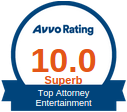In his capacity as a Columnist for California Sports Lawyer®, Founder Jeremy Evans has written a column about the Premier League's consideration of instituting a salary cap with comparison to American and other international sports leagues.
You can read the full column below.
~
In American professional sports, particularly in the National Football League (“NFL”), National Basketball Association (“NBA”), and National Hockey League ("NHL”), there is a salary cap on how much teams can spend in salaries on players. The NBA has a mixed system of a salary cap and luxury tax (e.g., soft salary cap with penalties) with additional exceptions. For example, for the 2023-2024 season under the NBA’s collective bargaining agreement (“CBA”), the salary cap is $136 million per team, luxury tax is $165 million, first apron is $172 million, and the second apron is $182.5 million. Most NBA teams exceed the $136 million mark through player exceptions. “[Larry] Bird exceptions” can be utilized by a team signing its own free agents. Financial fines are induced and paid to non-taxing teams at the end of the season, but if a team exceeds the first or second apron, it will lose certain privileges like restrictions on trade exceptions and trading draft picks.
For the 2023-2024 season, the NFL has a salary cap of $224.8 million per team. If a team exceeds this number, it is fined and loses some abilities to sign players and make trades. You can see a list of NFL teams, their spending, and cap space, here. There is also a minimum salary cap that must be at least 89% of the salary cap over a four-year period for a team that forces teams to spend money on player salaries and free agents. Teams also have options to use bonuses, incentives, and deferments to avoid salary cap issues.
The NHL’s salary cap for the 2023-2024 season is $83.5 million, while the minimum team salary cap is $61.7 million. There are, of course exceptions as in most professional sports leagues in America, but teams who go beyond or do not meet the cap (e.g., floor or minimum) may suffer fines of up to $5 million, cancelled contracts, loss of draft picks, points, or forfeiture of games. The NHL clearly has a lower salary cap as its league revenues and television broadcast and streaming contracts do not equal that of the NBA or NFL. The NHL salary cap is considered a strict one by its rules and enforcement.
Major League Soccer (“MLS”) has a salary cap split into two figures, $6.425 million for the minimum spend and $11.643 million for total cap that includes bonuses and performance characterized as discretionary spend. Again, with MLS being the newest of the big five professional American sports leagues (est. 1993), its salaries are much lower as the league grows.
Major League Baseball (“MLB”) does not have a salary cap or minimum team spend, but a luxury tax (e.g., “Competitive Balance Tax”) that is triggered once a team exceeds a threshold of salary spend. The 2024 season will see a luxury tax threshold of $237 million with penalties on overages and additional penalties depending on the amount of the overage and how many times the team has gone over the luxury tax. You can see the luxury tax tracker here, along with the 2023 list of MLB teams likely to pay luxury taxes, while the taxes collected are distributed to the non-tax paying MLB teams. MLB does not have a salary cap or floor/minimum, but only a luxury tax for overages and loss of Rule 4 draft (e.g, Amateur draft) placing for repeat offenders.
Salary caps and luxury taxes are generally an American product in the sports business, but the Premier League in England is considering instituting such a cap. The Premier League is facing issues of teams overspending compared to some lower-spending clubs, which can lead to less parity in the standings and playoff/postseason appearances. With La Liga (the Spanish professional soccer/futbol league) as an example, the league is struggling to meet revenue expectations and recently lowered the salary cap per team to $288 million from $692 million (a reduction of $400+ million). Real Madrid’s team salary was $775 million prior to the forced reduction. The Premier League team salaries range from $249.8 million to $27.8 million in payroll, while most of the La Liga clubs are well below $50 million. By comparison, MLB team payrolls in 2023 ranged from $353 million (New York Mets) to $56 million (Oakland Athletics). Both teams did not reach the postseason.
There are several reasons for the disparity in team spending. One is history (year the league was founded), another is how many players are needed on a team, and the third is based on television broadcast, streaming, and other revenues. A strong players union will continue to push for high salaries. Nonetheless, league revenues are the determining factor as it is mostly a free market system for determining how much a free agent should be paid.
League Parity
However, why do professional sports leagues utilize salary caps and luxury taxes to limit spending and are the results proof of success? For one, leagues want league parity. Sports leagues want to see a wide variety of teams making the playoffs/postseason and winning championships because it is good for competitive sports and revenues. In American sports, there is no relegation to lower levels for teams like their European counterparts, but the results are interesting. MLB has had nearly identical success in terms of a variety of teams making the postseason despite having the least amount of teams eligible compared to other professional American leagues with no salary cap or floor. Meaning, MLB rules allow for a fewer number of teams to make the postseason, but a wide array of teams have still made the postseason and won the World Series. You can see the numbers, here.
Focus on Player Development
MLB invented the farm system through Dodgers and baseball legend Branch Rickey. The NFL’s minor league is mainly NCAA college football. The NBA is the same with NCAA college basketball, the D-League, Overtime Elite, and an increasing number of foreign-born players. The NHL is very similar to MLB with a mix of NCAA, farm system, and overseas players. MLS has the NCAA, foreign-born players, and players developed through lower-level clubs. International soccer is almost solely through lower-level development as college sports do not exist in Europe or anywhere else in the world outside of the United States. This is to say that despite league disparity in salaries, the development of players is always essential to success. Spending money is only a tool, not a solution to winning. In other words, smart teams have a natural salary cap because development requires something more than money. Learn more about team management, here.
Free Markets and Capitalism in Sports
Professional sports leagues have tried limiting spending through both caps and floors, while incentivizing teams to sign or not sign free agents through cost saving measures with exemptions or exceptions, loss of draft picks, and more, but the most successful teams in the world consistently draft, develop, and sign players well despite their spending. There is a reason why teams that continue to finish last, but draft first round pics do not necessarily get better or win championships. It takes resources and smart front office work and coaching to be great. When managed properly, analytics and technological advances in artificial intelligence are also essential to sustained success.
Where most American leagues experience some level of antitrust exemption coverage, salary caps are allowed. However, should antitrust exemptions be lifted, there might be a claim that salaries should be what the market demands not what a CBA requires or restricts. Caps and floors do force teams to comply with financial incentives, but the results are mixed or better stated about equal as to what it means in terms of league parity.
What teams have done more recently is raise the minimum salaries because it is more likely that a player will not play a long time and reach free agency because of injury or performance. It is a balancing act between spending and development, and leagues will continue to not only debate the issue with each other, but also among the players. As the 21st century continues forward, it seems more and more likely that players will and should see themselves as league and team owners and managers because both management and talent need each other to thrive.
~
About Jeremy M. Evans:
Jeremy M. Evans is the Chief Entrepreneur Officer, Founder & Managing Attorney at California Sports Lawyer®, representing entertainment, media, and sports clients in contractual, intellectual property, and dealmaking matters. Evans is an award-winning attorney and industry leader based in Los Angeles and Newport Beach, California. He can be reached at Jeremy@CSLlegal.com. www.CSLlegal.com.
Copyright © 2023. California Sports Lawyer®. All Rights Reserved.





